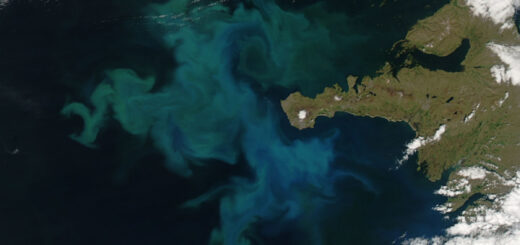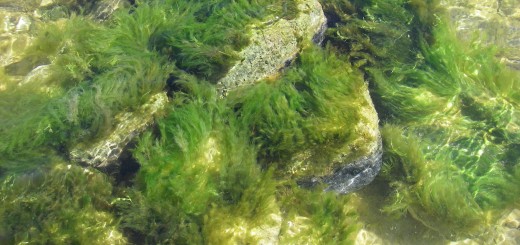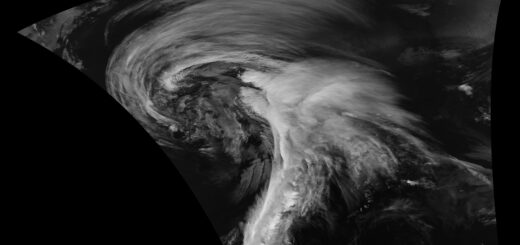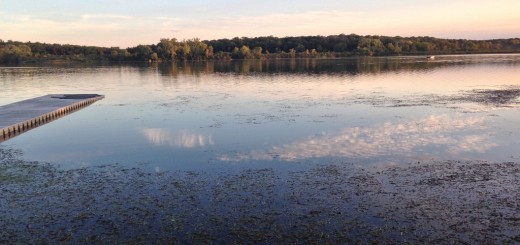Research Summary: Intrinsic Breaking Of Internal Solitary Waves In A Deep Lake
0Abstract
Based on simulations with the Dubreil-Jacotin-Long (DJL) equation, the limiting amplitude and the breaking mechanisms of internal solitary waves of depression (ISWs) are predicted for different background stratifications. These theoretical predictions are compared to the amplitude and the stability of the leading internal solitary waves of more than 200 trains of ISWs observed in the centre of a sub-basin of Lake Constance. The comparison of the model results with the field observations indicates that the simulated limiting amplitude of the ISWs provides an excellent prediction of the critical wave height above which ISWs break in the field. Shear instabilities and convective instabilities are each responsible for about half of the predicted wave breaking events. The data suggest the presence of core-like structures within the convectively unstable waves, but fully developed and stable cores were not observed. The lack of stable trapped cores in the field can be explained by the results from dynamic simulations of ISWs with trapped cores which demonstrate that even slight disturbances of the background stratification cause trapped cores to become unstable.

Flooded Lake Constance, Germany, in May 2013. (Credit: Wikimedia Commons User Johannes.gr via Creative Commons 3.0)
Introduction
The degeneration of basin-scale waves to ISWs and of the ISWs to turbulence by wave breaking is one of the main processes of energy transfer from large to small scales in the thermocline and deeper water regions of lakes [1], [2]. Due to the enhanced energy dissipation and mixing observed near the lake and ocean boundaries [3], [4], attention concerning wave breaking in the field has primarily been directed to ISWs interacting with sloping topography [5],[6], [7], [8]. It is however known that the stability of ISWs in undisturbed water is determined by the ISW amplitude [9], [10], [11], [12]. The amplitude of an ISW grows if the wave’s energy increases (e.g. due to a decrease in total depth or energy gain from the ISW generation mechanism, e.g. a steepened large-scale seiche). If the wave amplitude exceeds its limiting amplitude the wave starts to break. Hence, ISWs can also break in the lake interior away from topographical features [13]. Two qualitatively different mechanisms are responsible for ISW breaking in deep water, breaking due to shear instabilities or breaking due to convective instabilities, which results in the formation of a trapped, or recirculating, core [11]. These breaking mechanisms have different ecological consequences, in lakes as well as in the ocean. A shear limited wave can be assumed to dissipate energy, thereby inducing local mixing in the thermocline. An ISW with a trapped core theoretically contributes less to mixing, but has the potential to transport particles enclosed in the core over large distances [14]. It is therefore important to classify the breaking mechanism of breaking waves in the field.
Limiting amplitudes required for the occurrence of both convective and shear instabilities have been studied numerically [9], [10], [11], [15] and in the laboratory [12]. The occurrence of the different breaking mechanisms strongly depends on the background stratification and the background shear current, if one is present [10], [16]. In the absence of a background current, waves with trapped cores can only be generated in stratifications without a mixed surface layer[11], [12]. Such strongly monotonic stratifications are common in mid-latitude lakes during the warming period. However, to the best of our knowledge, the numerical predictions have not been tested against field data, since statistical data about ISW properties are scarce.
Here we compare observed amplitudes and breaking events of the leading ISWs of over 200 measured wave trains with simulations based on the Dubreil-Jacotin-Long (DJL) equation. This numerical investigation provides a theory-based analysis of the observations presented recently by Preusse et al. [17] and demonstrates that ISW breaking in the field can be adequately predicted from the background stratification.
This study is organized as follows: after the description of the field experiments, the theoretical concepts and numerical methods, we compare the theoretical prediction of the limiting amplitude for the onset of ISW breaking and the corresponding breaking mechanism with field observations of ISW amplitudes and ISW breaking. A dynamic simulation of one of the convectively unstable ISWs observed in the data set demonstrates the sensitivity of the trapped core to upstream perturbations in the background stratification.
Full study, including methods, results and discussion, published July 2012 under open-access license in PLOS ONE.













